Product Review: Teckel Sprinker Frog
Here’s a unique bait that puts the frog in the “plopping” category
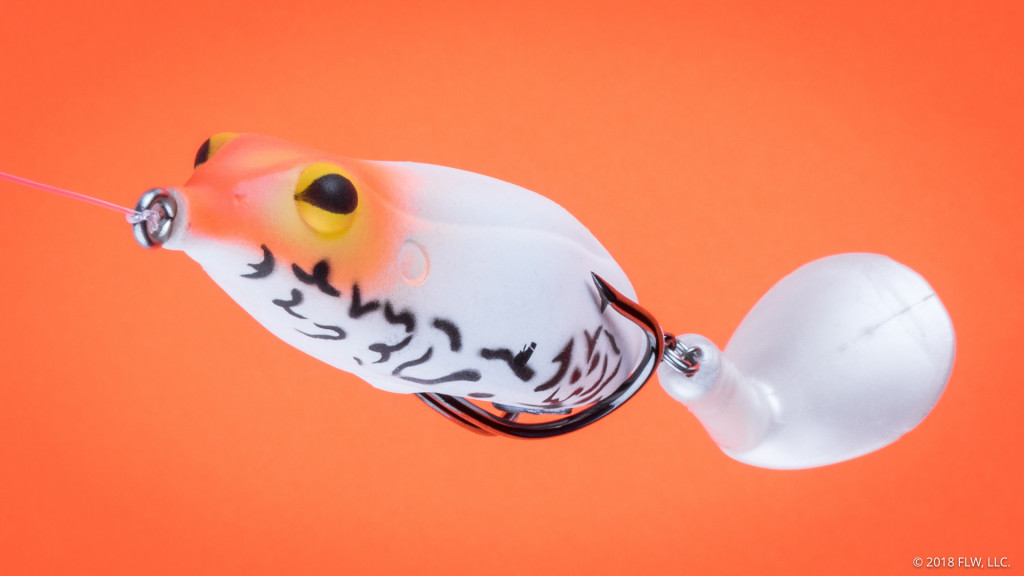
The Teckel Sprinker frog created a lot of hype after its introduction at ICAST 2017, so much so that the company initially couldn’t produce them fast enough to keep up with the early demand. Thankfully, now the Sprinker is more readily available. I recently took it for a lengthy test drive, and can tell you it’s a unique frog that can put bass in the boat.
The basics
Teckel built the hollow body with a pointed nose, narrow head and plump mid-section that more resembles a mouse with a weight problem than it does a frog.
The soft-plastic is very pliable for easy compression around a premium black nickel Gamakatsu hook. A flat butt weight enhances castability and balance while promoting a tail-down stance when idle.
The most important design feature, however, is the soft-plastic paddle tail in the back. It’s sized similar to that of a 5- to 6-inch swimbait. The tail secures to a corkscrew keeper, which links to a premium swivel embedded inside the body cavity. This allows the tail to rotate freely to create the Sprinker’s “plopping-style” action on a straight retrieve.
The Sprinker comes in a good mix of attractive color patterns that vary from a realistic bluegill pattern to bright white to black.

Good action
The Sprinker runs true at any pace, but slow and steady really lets the tail roil the surface in clean water, creating a nasty racket that sounds like a cross between a buzzbait and a mid-sized River2Sea Whopper Plopper.
While the tail won’t spin when in contact with thick vegetation, the bait can still waddle through light slop. The tail also holds the frog in place to a degree so you can twitch it and throw a little water over holes in grass or around other cover, though it’s really best on a straight retrieve.
Also, you can really cover some water because the Sprinker weighs 5/8 ounce and casts easily.
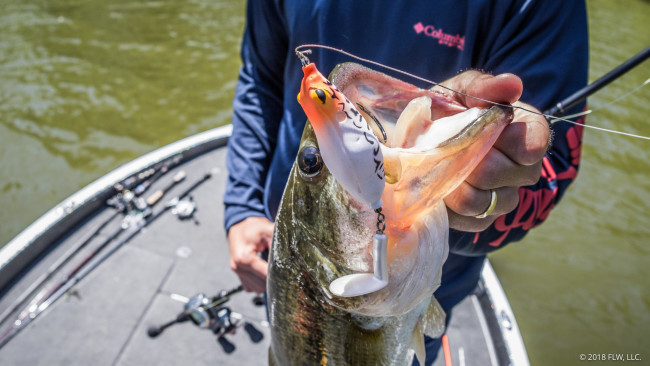
Hooking up
Just about every strike was violent, although many seemed to be directed at the tail, which caused me to miss some fish. I’d say I successfully hooked about 50 percent of my bites. Then again, several of the bass I caught choked the bait so deep that I had to reach for the needle-nose pliers.
A good tip to improve hooking percentages is one that’s been heavily preached to me by FLW Tour pro Jim Tutt of Longview, Texas: When performing a steady retrieve, bury the rod butt in your belly and keep the rod pointed to the 2-o’clock position. This helps take away your ability to jerk too quickly and subsequently pull the bait away from a fish before it has the opportunity to get the hooks in its mouth.
I also noticed the hooks had a tendency to snag when coming through some types of cover, particularly hay grass.
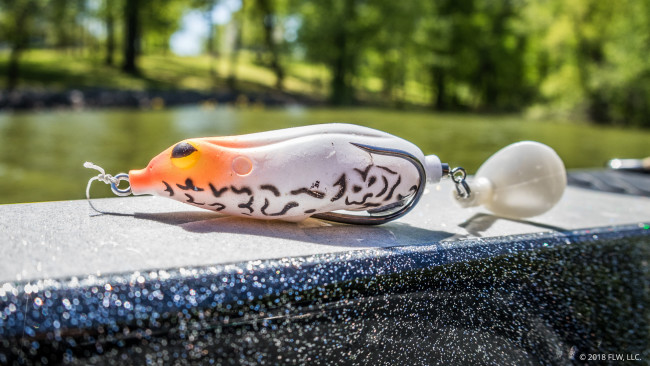
Durability
The main body seemed to hold up fairly well, but you are sure to rip up some tails fighting fish through heavy cover or due to violent short-strikes. Sprinker includes an extra tail in each package and sells replacement tails four to a pack with an extra spring keeper.
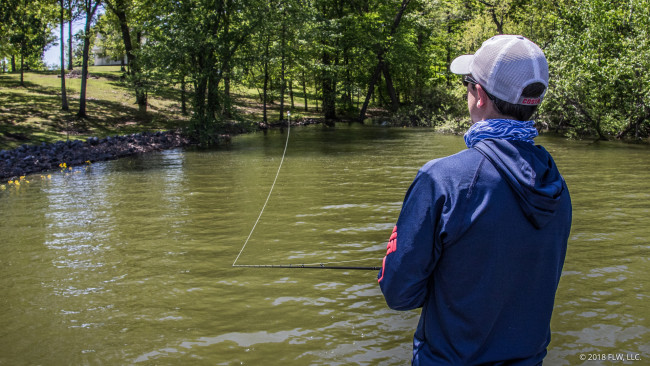
The right equipment
As with other frogs, it’s important to use a rod with serious backbone for fighting through heavy cover and a little tip action for launching the bait, but not so long that it hampers your ability to work the bait effectively. I threw the Sprinker on a 7-foot St. Croix Slop-N-Frog rod, and it worked great for performing steady retrieves or twitching the bait over isolated pockets in hydrilla, pads and hay grass.
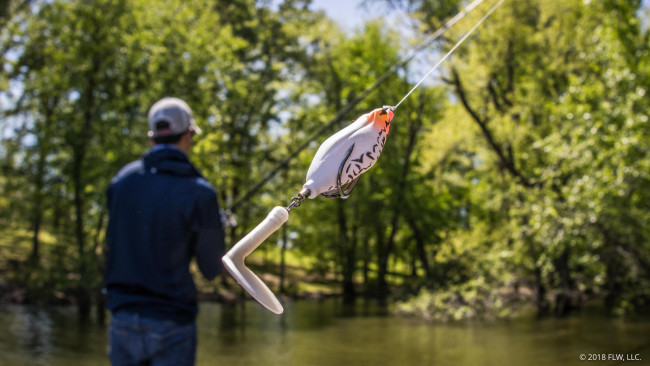
The verdict
The Sprinker isn’t magic, but it’s another tool worthy of a spot in your tackle bin. What really stands out is the bait’s versatility. It offers some of the attributes of a hollow-body frog, buzzbait and Plopper in the same package. It can be fished with varied retrieve styles and speeds to adapt to different situations around all sorts of shore cover, docks or over open water.
The only other drawback I can think of is the price. At $14.99, it’s a little pricey for a frog, even if it is unique among hollow-body baits.
5 Tips for Success with John Cox
by Curt Niedermier
According to 2016 FLW Cup champ John Cox, the Sprinker is the real deal. It’s not a numbers bait, but it’s a big-fish tool.
1. Fish it fast – The Teckel Sprinker’s tail “plops” even at a fast clip, so take advantage of its high-speed ability to cover water. The speed at which it can be fished is a major advantage over other frogs. You can bomb vast hay fields, cover the edge of grass beds at a fast clip and pick apart flooded brush in a hurry.
2. Catch more swiping fish – If fish are swiping at the bait but not eating, you probably need to increase your retrieve speed. This forces fish to react and commit. You might also try a different color.
3. Go where treble hooks can’t – In addition to its ability to cover water, a big advantage of the Sprinker is it’s ability to go where the Whopper Plopper (which has similar action) can’t because the Plopper has exposed treble hooks. Sling it under overhanging limbs, under docks, into emergent grasses and pretty much anywhere trebles might snag. It won’t swim through thick mats, but “loose” cover is no problem.
4. Keep it natural – Cox believes a natural color pattern is almost always best, so the bluegill pattern is one of his favorites. However, he swaps out the bright chartreuse tail that comes in the package for a more subtle smoke tail. His other favorite color is black and blue.
5. Launch and place – Cox recommends a 7-4, medium-heavy rod. It’s a good length-to-strength combo for bombing long casts or placing the bait next to a target when needed.
Details
Company: Teckle USA
Product: Sprinker Frog
MSRP: $14.99
Colors: 8
Length: 4 1/2 inches (with tail)
Weight: 5/8 ounce